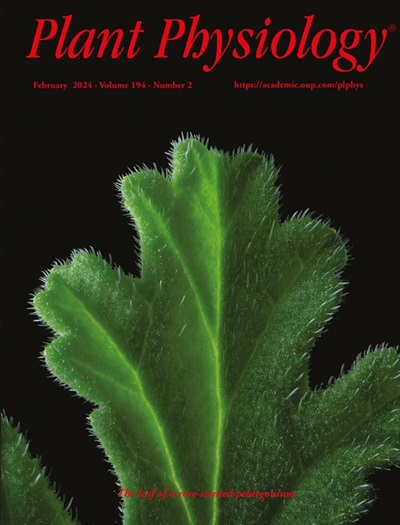Heat stress response and transposon control in plant shoot stem cells
IF 6.5
1区 生物学
Q1 PLANT SCIENCES
引用次数: 0
Abstract
Plants have an impressive repertoire to react to stress conditions that limit regular growth. Elevated temperatures beyond the optimal range cause rapid and specific transcriptional responses, resulting in developmental alterations and plasticity. Heat stress also causes chromatin decondensation and activation of some transposable elements (TEs), endangering genomic integrity. This is especially risky for stem cells in the shoot apical meristem (SAM) that potentially contribute to the next generation. We examined how the heat stress response in SAM stem cells of Arabidopsis (Arabidopsis thaliana) is different from that in other tissues and whether the elements of epigenetic TE control active in the meristem are involved in specific heat protection of stem cells. Using fluorescence-activated nuclear sorting to isolate and characterize SAM stem cells after exposure to conditions that activate a heat-responsive TE, we found SAM stem cells maintain their developmental program and suppress the heat response pathways dominating in surrounding somatic cells. Furthermore, mutants defective in DNA methylation recovered less efficiently from heat stress and persistently activated heat response factors and heat-responsive TEs. Heat stress also induced epimutations at the level of DNA methylation, especially in the CHG sequence context. Regions with modified DNA methylation patterns remained altered for at least three weeks beyond the stress. These findings urge for disentangling cell type-specific responses under different stress types, especially for stem cells as bridges to the next generation.求助全文
约1分钟内获得全文
求助全文
来源期刊

Plant Physiology
生物-植物科学
CiteScore
12.20
自引率
5.40%
发文量
535
审稿时长
2.3 months
期刊介绍:
Plant Physiology® is a distinguished and highly respected journal with a rich history dating back to its establishment in 1926. It stands as a leading international publication in the field of plant biology, covering a comprehensive range of topics from the molecular and structural aspects of plant life to systems biology and ecophysiology. Recognized as the most highly cited journal in plant sciences, Plant Physiology® is a testament to its commitment to excellence and the dissemination of groundbreaking research.
As the official publication of the American Society of Plant Biologists, Plant Physiology® upholds rigorous peer-review standards, ensuring that the scientific community receives the highest quality research. The journal releases 12 issues annually, providing a steady stream of new findings and insights to its readership.
 求助内容:
求助内容: 应助结果提醒方式:
应助结果提醒方式:


